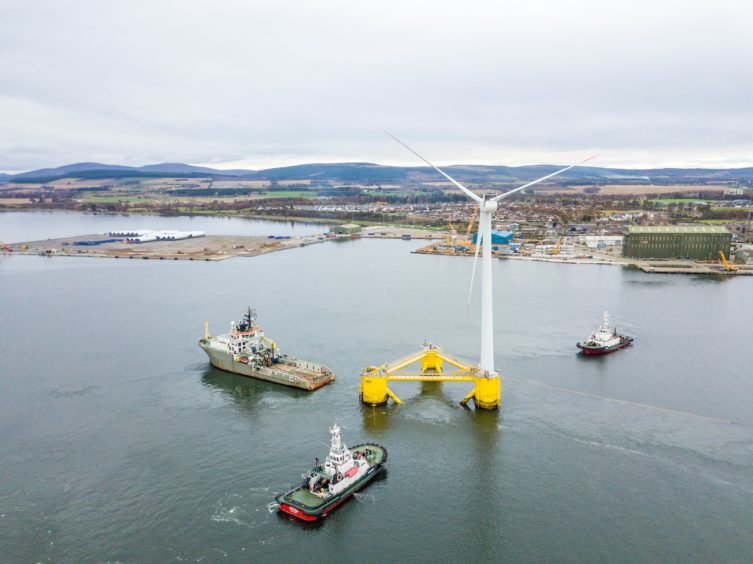
Floating offshore wind could become “subsidy-free” in the UK by the early 2030s, according to a new study.
Research by the Offshore Renewable Energy (ORE) Catapult’s Floating Offshore Wind Centre of Excellence (FOW CoE), found large floating projects could secure Contracts for Difference (CfD) strike prices below electricity price forecasts as early as 2029.
However, it has also stressed that the technology’s success depends on the deployment scenario pursued by the UK.
The importance of floating offshore wind in helping Westminster and Holyrood hit their respective net zero goals has been brought to the fore in recent years.
The technology allows developers to install wind farms in deeper, windier waters, increasing production and safeguarding the supply of green energy.
The Floating Offshore Wind: Cost Reduction Pathways to Subsidy-Free study summarises work undertaken as part of the FOW CoE’s Cost Reduction Pathways project, which used GIS mapping software to develop 75 gigawatts (GW), 100GW and 150GW offshore wind deployment scenarios to 2050.
An initial 20GW of projects were defined in detail – in terms of location, scale and technology deployed.
The model identified the East and North East of Scotland, the Celtic Sea and off the North East of England as areas of “high potential” for short and medium term floating offshore wind deployment.
A number of recommendations were included in the study, ranging from increasing the target of 1 GW of floating wind by 2030 to 2 GW and establishing an offshore leasing round to target promising areas.
Chris Hill, operational performance director at ORE Catapult and FOW CoE executive governance board co-chair, said: “It is vital the UK takes a strategic approach to supporting the rapidly developing industry UK floating wind industry to ensure the potential benefits are realised.
“This study provides a strong evidence base for key policy decisions relating to the growth and scale of the industry in the UK – both in terms of the focus for support, and timing. We look forward to continuing our work with key stakeholders to develop a long-term vision for floating in the UK and supporting the rapid growth of the industry – both in our journey to Net Zero and also as a key driver of economic recovery and growth.”
Cameron Smith, head of global offshore, mainstream renewable power and FOW CoE executive governance board co-chair, said: “The Floating Offshore Wind – Cost Reduction to Subsidy Free Report clearly outlines the huge impact floating offshore wind will have on the journey to Net Zero – both as a key component of a cost-effective Net Zero, but also as a driver of economic recovery and growth.
“Just under 10 years ago a similar vision for offshore wind was articulated by the Offshore Wind Cost Reduction Task Force. The offshore wind industry and stakeholders subsequently collaborated to rapidly reduce the cost of offshore wind, and in doing so created thousands of jobs and secured offshore wind’s central role in a cost-effective Net Zero.
“This report is equally ambitious and with effective collaboration, industry, Government and other key stakeholders can build on and exceed the success of offshore wind over the last 10 years.”
Rebecca Williams, RenewableUK’s head of policy and regulation, said: “As this report shows, floating wind can repeat the success of fixed-bottom offshore wind by achieving spectacular cost reductions over the course of this decade, to a point where we can generate electricity below the wholesale price.
“Floating wind has a key role to play in hitting the UK’s net zero emissions target – we can’t get there without it. As long as industry and Government work closely together to support the rapid expansion of floating wind, we can maintain our global lead in this innovative technology and export it worldwide, securing jobs and investment for UK companies.
“The Government has set the industry a target of installing one gigawatt of floating wind by 2030 as our next step forward, but we think we can aim higher and double that as long as we get the policy framework right.”
Recommended for you

